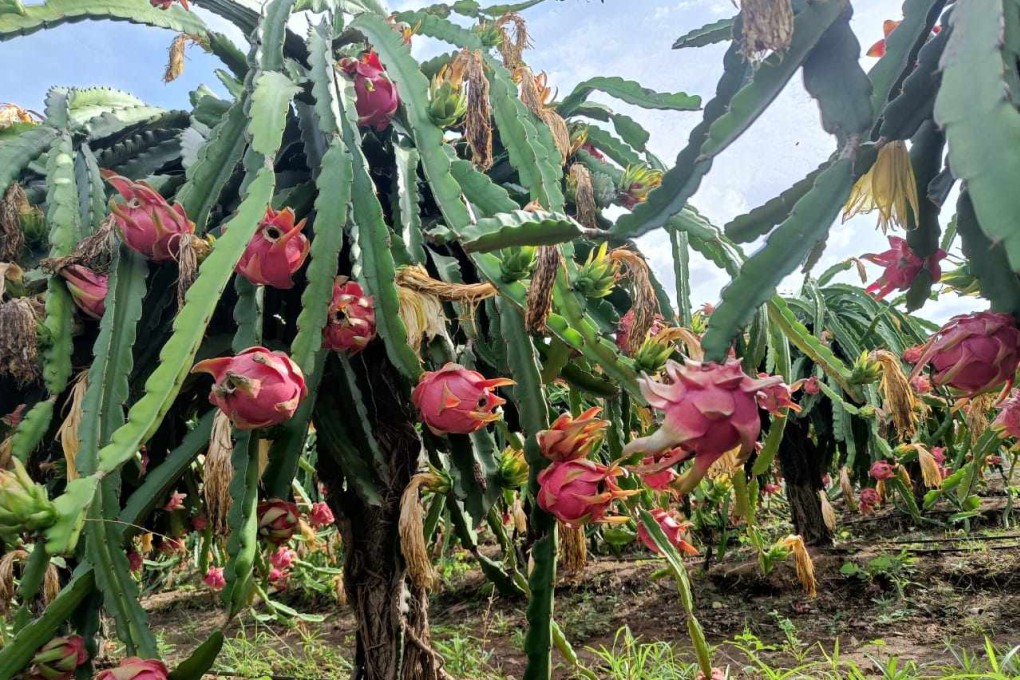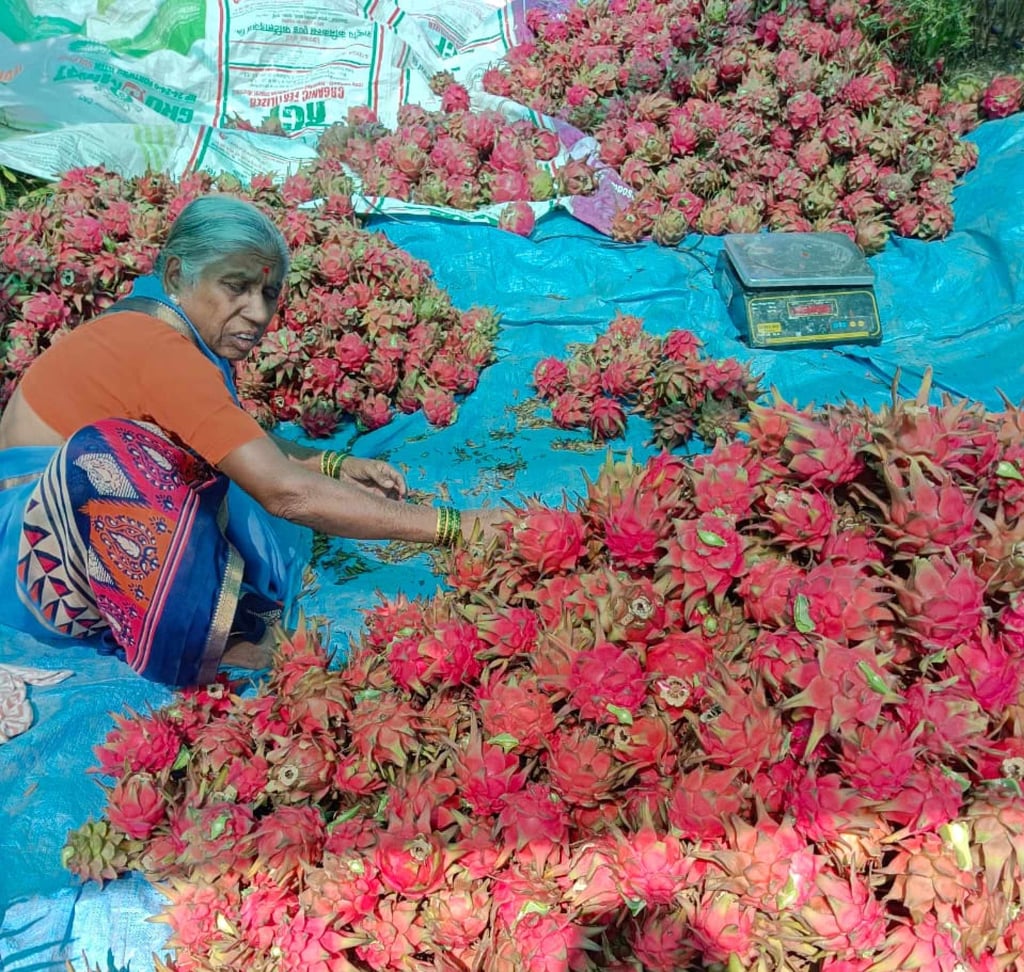India’s drought-hit farmers make a fruitful pivot to ‘the only crop that can survive’: hardy dragon fruits
- Indian farmers favour dragon fruits for their profitability, resistance to pests, ability to grow in arid conditions and comparatively low water needs
- The high profit margins have even attracted interest from affluent professionals – but not everyone has enjoyed the fruits of their investments

“The annual profit is 50 per cent more as compared to my earnings from grapes and pomegranate that I cultivated before,” she told This Week In Asia. “In drought-affected areas, dragon fruit is the only crop that can survive.”

Several farmers, who previously cultivated traditional crops in the semi-arid and drought-hit regions of Maharashtra, Gujarat, Karnataka and Andhra Pradesh, have over the past six years started to grow dragon fruits instead.
This “exotic” fruit with scaly spikes and high nutrient values was grown only in home gardens thirty years ago, but by 2020, 12,000 tonnes of dragon fruits were being produced annually in India in some 4,000 hectares of land. Cultivation will further expand to 50,000 hectares of land in the next five years, according to the Indian Council of Agricultural Research – National Institute of Abiotic Stress Management
